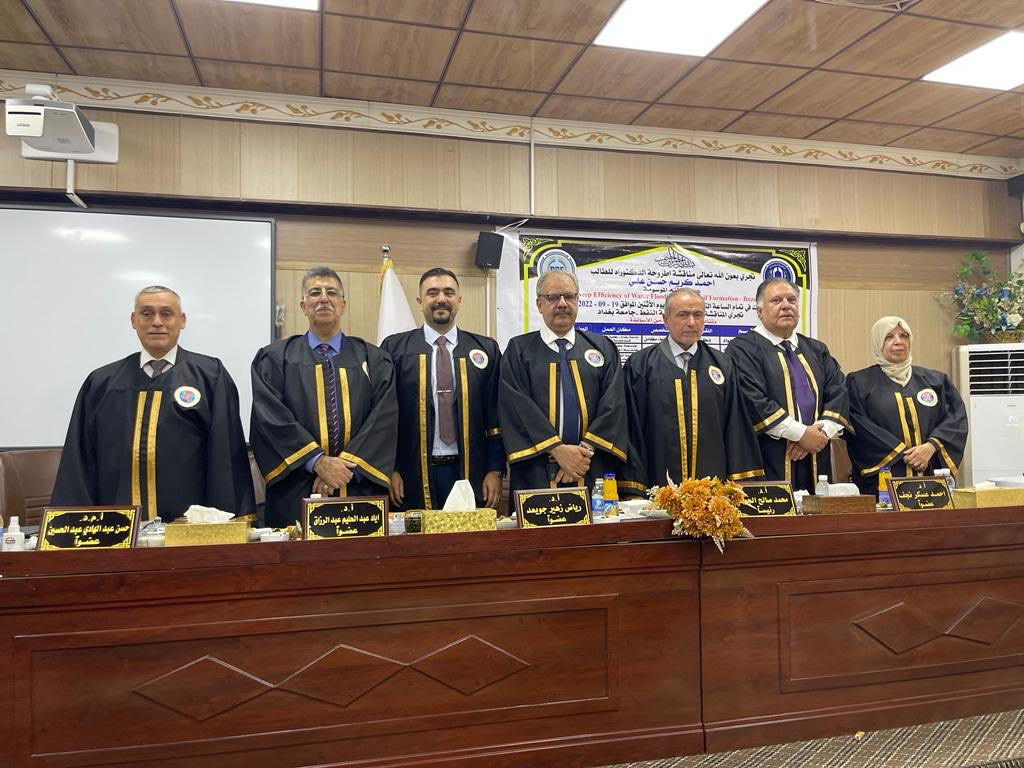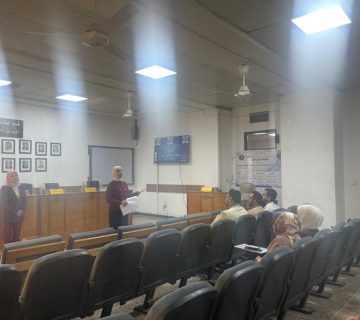جرت بقسم هندسة النفط مناقشة اطروحة الدكتوراه الموسومة
Improving Sweep Efficiency of Water Flooding for Mishrif Formation- Buzurgan Oil Field
لطالب الدكتوراه احمد كريم حسن وذلك يوم الاثنين 19 ايلول 2022 في قاعة المناقشات بقسم هندسة النفط.
تألفت لجنة المناقشة من الذوات
ا.د. محمد صالح الجواد من جامعة بغداد- كلية الهندسة- قسم هندسة النفط- رئيسا
ا.د. رياض زهير جويعد من جامعة بغداد- كلية الهندسة- قسم هندسة الموارد المائية- عضوا
ا.د. احمد عسكر نجف من جامعة الكرخ- قسم الجيوفيزياء والتحسس النائي– عضوا
ا.د. اياد عبدالحليم عبدالرزاق من جامعة بغداد- كلية الهندسة- قسم هندسة النفط- عضوأ
ا.م.د. حسن عبدالهادي عبدالحسين من جامعة بغداد- كلية الهندسة- قسم هندسة النفط- عضوا
ا.م.د. سميرة محمد حمدالله من جامعة بغداد- كلية الهندسة- قسم هندسة النفط- عضوا ومشرفا
وبعد مناقشة الطالب والاستماع لدفاعه وتقييم مستوى الأطروحة، منح الطالب درجة الدكتوراه بهندسة النفط
ادناه ملخص الاطروحة باللغة الانكليزية
Buzurgan field is one of the most important Iraqi oil fields, Mishirif formation is the main producing layer in this field, which divided into two main segments North and South dome. This field is suffering from moderate pressure depletion rate, and gradually decreasing in oil productivity at many wells. Mishrif reservoir is a candidate for a full-field water flooding project for pressure maintenance and improving oil recovery. To improve sweep efficiency of waterflooding, appropriate injection patterns and injection rates were achieved. To optimize the waterflooding process, a smart streamline simulation is used. Polymer flooding was also studied to improve sweep efficiency through improving the mobility ratio. The first step in a simulation study is constructing a modern geological model to promote a full detailed description for the petrophysical properties. A full-field
3D geological model is performed by Petrel 2017 software, while distribution of all properties depending on facies modeling. A full-field 3D black oil dynamic model is developed to achieve the targets of the present. For the duration of the production period in the Mishrif reservoir, the historical match for both individual wells and the overall reservoir in terms of oil production rate, water injection rate, water cut, and static pressure are performed precisely.
A waterflooding model is the main purpose of current study to prepare a comprehensive design and an optimum implementation plan for Mishrif reservoir– Buzurgan oilfield. Several waterflooding strategies are performed to accomplish the goal of this study with period around 22 years which extending from January2021 to March 2042.
Two types of injection pattern are employed; inverted nine– spot pattern and peripheral pattern. Additional producers and injectors are located in the suitable areas in the reservoir to achieve both patterns. Effective design of the full-field waterflooding plan by streamline simulator is carried out to optimize water injection and mitigate water cut. Three policies are applied as separate strategies as well as mixed strategies to enhance the sweep efficiency and reduce water cut in Mishrif Reservoir, these policies are designed to; allocate more water injection to areas and zones with higher voidage (VREP), reduce water recycling (INJEFF), and allocate more injection to areas and zones with relatively larger quantities of remaining mobile oil (RECOV). In addition, one of the purposes of this study is to detail a suitable and widely accessible polymer flooding applicability for EOR while improving the sweep efficiency by selecting the appropriate polymer characterization. Polyacrylamide and Xanthan polymer are used in different concentrations and different alternative injection schedule with water. Four distinct groupings of facies have been found to determine the reservoir characteristics (porosity and water saturation). Considering the facies, the initial oil in place (IOIP) was 731*10 6 SM 3 by the static model. The IOIP by dynamic model is equal to 746*106 Sm 3 . The estimated IOIP by the dynamic model is comparable to the estimated IOIP by the geological model with just a 2 percent difference. Design of full-field water flooding plan by both inverted nine-spot and peripheral patterns are achieved by drilling 30 new injectors and 80 producers. The different strategies gave recovery factors in the range 21.2%-23.7%. The Mishrif reservoir's highest oil recovery factor value was obtained by the strategies with a field production rate of 150 MSTB/D and a field injection rate of 120 MSTB/D as well as field production and injection rates of 250 MSTB/D and 140 MSTB/D. In streamline simulator, three strategies are applied using field oil production rate of; 250 MSTB/D, 150 MSTB/D, and 125 MSTB/D and individual VREP, INJEFF, and RECOV streamline policies. The recommended strategy is that used150 MSTB/D as highest oil recovery and lower water cut are obtained. In the fourth strategy, a combination policy of 8 years VREP, 8 years INJEFF, 6 years RECOV was found to give the greatest oil recovery factor of 24.1%. In general using individual policy is more effective. Two cases of polymer flood were applied; using peripheral injectors with inverted nine-spot in a limited area and using only inverted nine-spot covering the whole reservoir. The second case gave slightly higher oil recovery and lower water cut. High polymer concentration didn’t improve oil recovery for the first case due to bad reservoir properties in the reservoir periphery which adversely affect the polymer mobility. In contrast, polymer concentration in the second case was five times higher (0.526 Kg/m 3 ) than in case one. The best scheduling periods for polymer flood is one to three years of polymer-water injection in the both cases. The two cases of the polymer flooding gave higher recovery and lower water cut than conventional water flooding. An incremental increase of about (1%) and (4%) in oil recovery and the reduction of (2%) and (7.2%) in water cut were observed for the first and second case.










